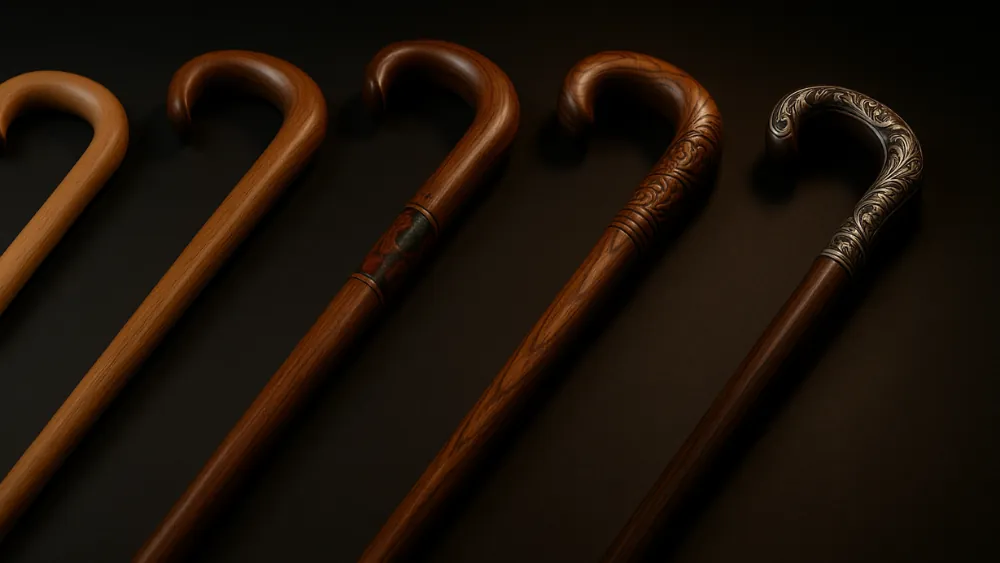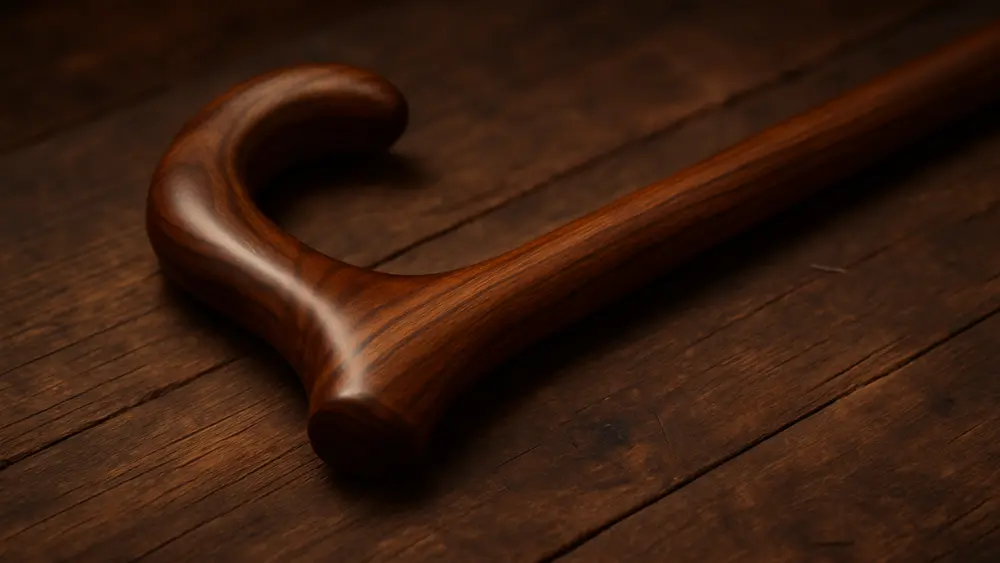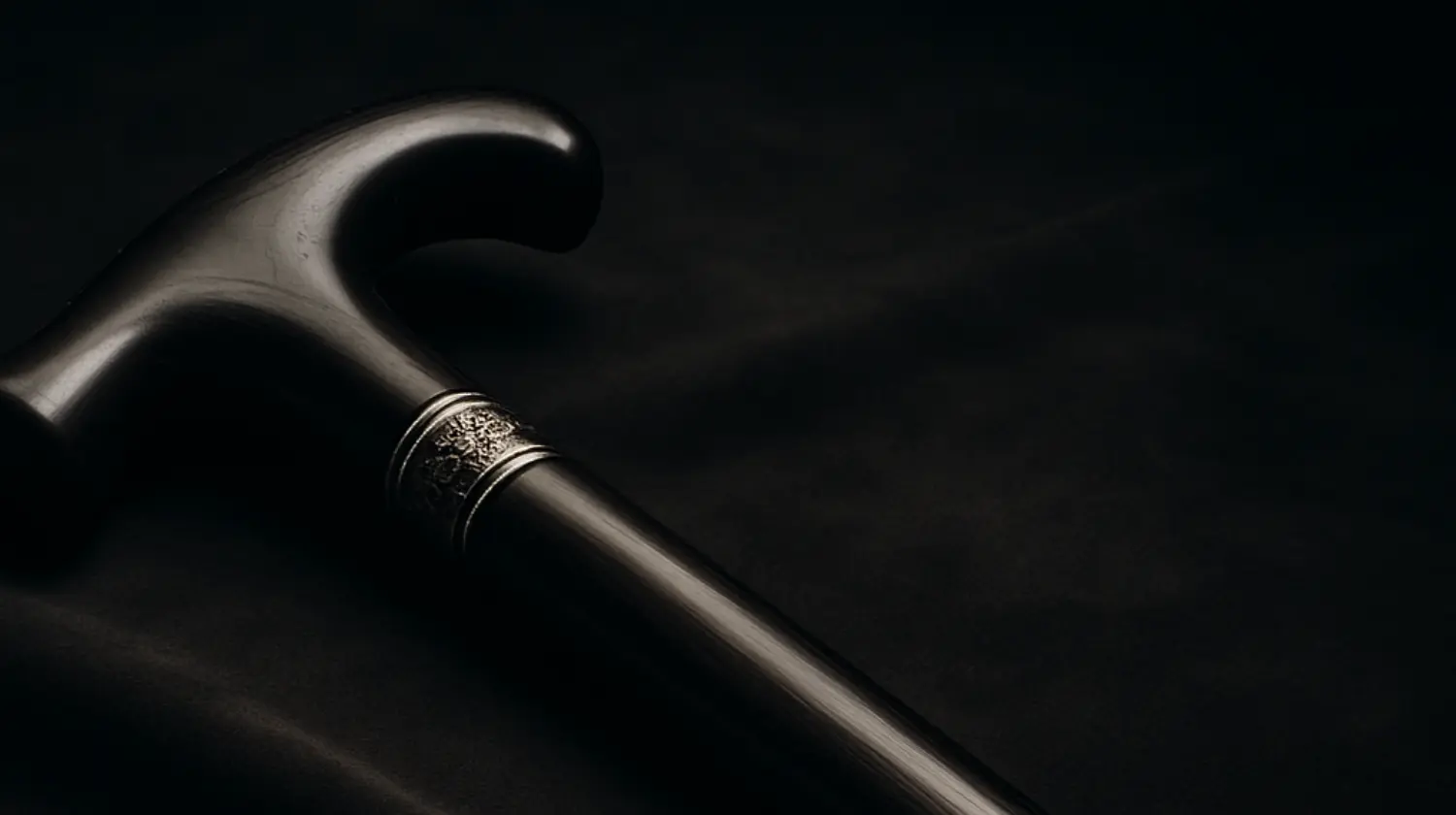
The Benefits of an Ebony Cane: Black Majesty in Service of Health
In the world of handcrafted walking canes, the word Ebony instantly conjures up images of sleek black elegance, reassuring weight, and a regal feel. But this exquisite dark wood isn’t just famous for its unique appearance. Its physical and chemical composition makes it a top-tier material for cane-making: high density, exceptional hardness, natural resistance to moisture and pests, and—perhaps most importantly—a glossy, polished finish that shines beautifully even without synthetic coatings.
This article is a scientific and cultural journey into the realm of the ebony cane. We’ll begin with the biology and physical traits of this remarkable wood, then explore its ergonomic and practical benefits for seniors, art lovers, and collectors. We’ll touch on its historical significance across civilizations, clarify some common misconceptions, and finally, offer tips on how to maintain and verify the authenticity of this “noble black” cane.

This article is a scientific and cultural journey into the realm of the ebony cane.
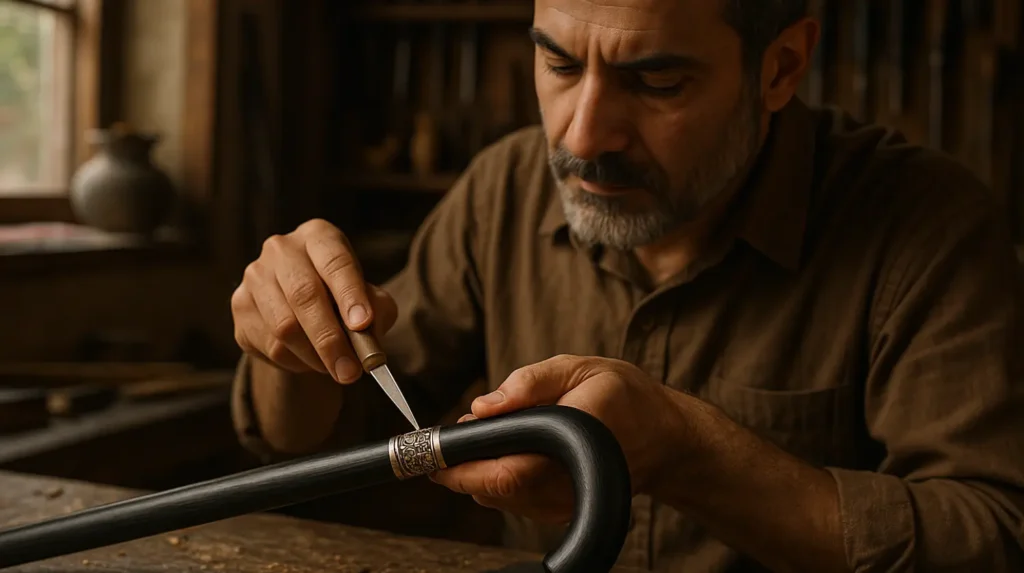
Biology & Material Science: What Makes Ebony Stand Out?
Key Species:
Diospyros ebenum (Ceylon & Indian Ebony)
Diospyros crassiflora (West African Ebony)
Diospyros celebica (Macassar Ebony – Striped, from Indonesia)
Ebony’s deep black or streaked brown-black tones come from high concentrations of tannins and compacted carbon in its dense cellular structure.
Ergonomic Advantages of the Ebony Cane
Natural Shock Absorption
Many users report that ebony canes transmit significantly less ground impact to the palm compared to metal or lighter woods like maple. Why?
Its high density and modulus of elasticity raise the natural vibration frequency, reducing the transmission of low-frequency gait vibrations (2–5 Hz).
Ideal Weight Balance
Overly light canes can feel unstable, requiring more force to keep grounded. Overly heavy ones can cause fatigue. At a standard length of 90–94 cm, ebony canes typically weigh between 400 and 580 grams—an optimal balance between stability and comfort.
Durability Without Heavy Coating
Most wooden canes need thick polyurethane or lacquer layers to resist moisture—layers that may flake over time. Thanks to its density and natural oils, ebony requires only a light coat of natural wax or lemon oil to maintain a smooth, glossy, and water-resistant surface.
Seamless, One-Piece Handles
Because of ebony’s superior hardness, makers can carve “Derby” or “Crook” handles from a single block—no screws or nails needed.
Benefits:
Fewer joints = less vibration, more strength
Seamless beauty—no visible seams or joints
Artistic Value
Naturally Black—No Dye Needed
Ebony’s deep jet-black finish or Macassar streaks need no chemical stains, offering a minimalist luxury aesthetic that pairs beautifully with formalwear or modern minimalist fashion.
Precision Carving & Inlay Potential
Ebony’s hard surface and minimal chipping allow artisans to execute ultra-fine carvings or silver wire inlays. The result? A collectible cane with exceptional artistic value.
Cultural Significance
In ancient Egypt, ebony canes symbolized priestly authority. In Qajar-era Iran, they represented royal prestige. Owning an ebony cane is a way to bridge tradition with modern elegance.
Clinical & Health Benefits
Reduced Slipping Risk
Ebony’s wood surface doesn’t get clammy with sweat like metal, and its weight helps the rubber tip maintain better ground contact.
Suitable for Parkinson’s Patients & Tremors
A stable grip and moderate weight help dampen involuntary tremors. Occupational therapists often recommend medium-weight canes—ebony tops the list.
Antimicrobial Potential
Studies on West African ebony extracts show mild antibacterial properties from its phenolic compounds. While not sterile, ebony resists bacterial growth better than softer woods.
Maintenance Tips
Oil Seasonally: Apply a thin coat of natural lemon oil or carnauba wax every six months.
Avoid Direct Heat: Heaters or hot car trunks may cause fine surface cracks.
Replace the Rubber Tip Promptly: Ebony’s weight puts extra pressure on the tip—replace every 6–9 months or once the treads wear down.
Polish with Microfiber Cloth: Ebony dust can dull the finish—occasional wiping restores its shine.
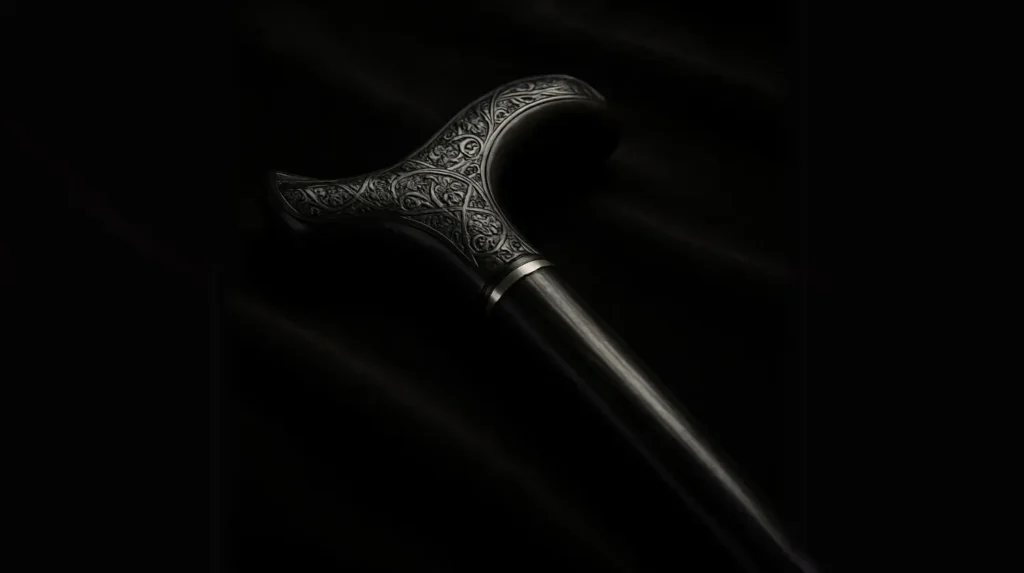
FAQs
Is ebony suitable for daily urban use or just ceremonial?
If you’re comfortable with moderate weight, ebony is excellent for daily use. A quality rubber tip reduces slipping and the durability is outstanding.
Can an ebony cane be made as a quad cane?
Yes, though typically, only the shaft is ebony. The four-pronged base is made from lightweight aluminum or steel to prevent excess weight.
How can I detect hidden cracks?
Ebony emits a sharp sound upon heavy impact. Under angled light, hairline cracks appear matte black. If in doubt, consult the maker.
Conclusion
An ebony cane is more than just a mobility aid—it’s a fusion of biotechnical excellence, traditional craftsmanship, and cultural symbolism. Its practical advantages (vibration reduction, longevity) combine with unmatched beauty. For seniors or joint-pain patients seeking a support cane that also reflects their personal style, ebony is a lifelong investment—provided that authenticity, proper height, and a quality tip are ensured.
SOURCE: asadast.ir
Related Posts
How Is the Price of a Cane Determined?
How Is the Price of a Cane Determined? Each time a customer steps into the…
The Benefits of Walnut Wood Canes: A Balance of Elegance, Durability, and Heritage
The Benefits of Walnut Wood Canes: A Balance of Elegance, Durability, and Heritage At first…
Learning More About the Mentashā (Dervish Staff)
Learning More About the Mentashā (Dervish Staff) Ancient traditions and rituals in Iran and many other…

